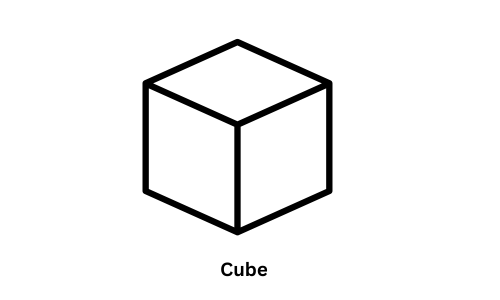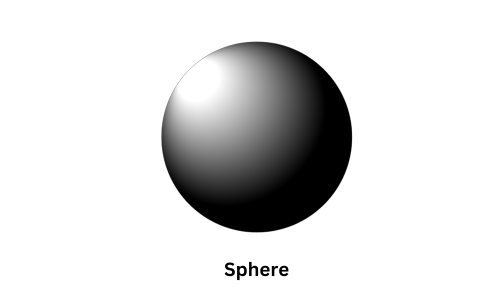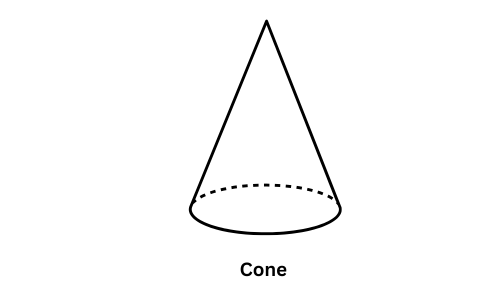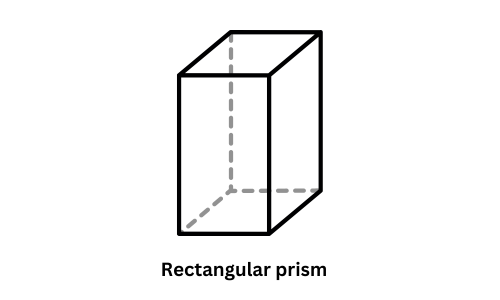Geometry
Straight line and curved line
Understanding Straight Lines and Curved Straight Line
A straight line is the shortest distance between two points. It doesn’t bend or curve; it just goes straight.
– How it looks: Imagine you draw a line between two dots with a ruler. That line is straight.
– Examples: The edge of a book, the lines on lined paper, and a pencil are all examples of straight lines.

Examples of straight line


Curved Line
A curved line bends and turns. It is not straight like a straight line.
– How it looks: Imagine drawing a line that looks like a wave or a circle. That line is curved.
– Examples: The edge of a round table, the shape of a banana, and the outline of a smiley face are examples of curved lines.
Simple Exercise:
1. Draw a straight line: Use a ruler to draw from one point to another.
2. Draw a curved line: Try drawing a line that looks like a rainbow or the letter “S.”



Examples of curved line



Lines
What Are Lines?
A line is a long, thin mark made by drawing a pencil or pen from one point to another. Lines can be straight or curved and can go in different directions.
Types of Lines
1. Straight Line
– Description: A straight line goes in one direction without bending or curving.
– Example: The edge of a ruler, the lines on your notebook, or the path you walk in a straight line.
2. Curved Line
– Description: A curved line bends and turns. It can be wavy, like a wave in the ocean, or round, like a circle.
– Example: A rainbow, a roundabout in a playground, or the curved shape of the letter “S”.
3. Horizontal Line
– Description: A horizontal line goes from left to right, like the horizon where the sky meets the ground.
– Example: The top edge of a table or the horizon you see when looking at the ocean.
4. Vertical Line
– Description: A vertical line goes up and down, like the trunk of a tree or a flagpole.
– Example: The side edge of a door or a tall building.
5. Diagonal Line
– Description: A diagonal line slants and is not perfectly horizontal or vertical. It looks like it’s leaning to one side.
– Example: The side of a slanted roof or the slash “/” symbol on a keyboard.





Steps to Draw a Straight Line Using a Ruler
1. Gather Your Materials:
– You’ll need a pencil and a ruler. A ruler is a tool that helps you draw straight lines.
2. Place the Ruler on the Paper:
– Put the ruler flat on your paper where you want to draw the line.
– Make sure the edge of the ruler is lined up with the points where you want your line to start and end.
3. Hold the Ruler Steady:
– Use one hand to hold the ruler firmly in place. Make sure it doesn’t move while you draw the line.
4. Draw the Line:
– With your other hand, place the pencil at one end of the ruler’s edge.
– Slowly draw the pencil along the edge of the ruler, moving from one point to the other.
– Keep the pencil pressed lightly against the ruler’s edge to make sure your line is straight.
5. Lift the Ruler:
– Once you’ve reached the end of your line, carefully lift the ruler off the paper. You should see a nice, straight line!
Plane shapes
What Are Plane Shapes?
– Plane shapes are flat shapes that you can draw on a piece of paper. They don’t have any thickness or depth; they only have length and width.
– These shapes are also called 2D shapes because they have two dimensions: length and width.
Common Plane Shapes
1. Circle
– Description: A round shape with no corners or edges. Every point on the edge is the same distance from the center.
– Example: A clock face, a coin, or a pizza.
2. Square
– Description: A shape with four equal sides and four corners (right angles).
– Example: A checkerboard square, a tile, or a window.
3. Rectangle
– Description: A shape with four sides and four corners. The opposite sides are equal in length.
– Example: A book, a door, or a table top.
4. Triangle
– Description: A shape with three sides and three corners. Triangles can look different depending on the length of their sides.
– Example: A slice of pizza, a traffic sign, or a hanger.
5. Oval
– Description: A shape that looks like a stretched-out circle. It has no corners.
– Example: An egg, a mirror, or a balloon.
6. Pentagon
– Description: A shape with five sides and five corners.
– Example: The shape of a house’s roof or a soccer ball pattern.
7. Hexagon
– Description: A shape with six sides and six corners.
– Example: A honeycomb pattern or a floor tile.








Solid (3d shapes)
What are 3D Shapes?
3D shapes are shapes that are not flat like a piece of paper. They have three dimensions: length, width, and height. You can hold them in your hand, and they take up space!
Common 3D Shapes
1. Cube
– What it looks like: A cube is like a box or a dice. All its sides are squares, and all sides are the same size.
– Examples: A Rubik’s cube, an ice cube, a dice.
2. Sphere
– What it looks like: A sphere is perfectly round, like a ball. It has no edges or corners.
– Examples: A basketball, a globe, an orange.
3. Cylinder
– What it looks like:A cylinder has two round ends and one long curved side. Imagine a tin can or a straw.
– Examples: A soda can, a pencil, a candle.
4. Cone
– What it looks like: A cone has a round base and comes to a point at the top, like an ice cream cone.
– Examples: A party hat, an ice cream cone, a traffic cone.
5. Rectangular Prism
– What it looks like: A rectangular prism is like a box or a brick. It has six faces, and all faces are rectangles.
– Examples: A cereal box, a book, a shoebox.
How to Identify 3D Shapes
– Faces: The flat surfaces of the shape.
– Edges: Where two faces meet.
– Vertices (Corners): Where edges meet.
Facts
– A cube has 6 faces, 12 edges, and 8 vertices.
– A sphere has no edges or vertices, just one curved face.
– A cylinder has 2 faces (the circles) and 1 curved surface, but no vertices.
– A cone has 1 vertex and 1 curved surface.





Trace the solid shape
What is Tracing Solid Shapes?
When you trace a solid shape, you place the shape on a piece of paper and use a pencil to draw around its edges. This creates a 2D outline of one of the shape’s faces on the paper.
How to Trace Solid Shapes
1. Choose a Shape: Pick a solid shape like a cube, cylinder, or cone.
2. Place the Shape on Paper: Put one face of the shape flat on a piece of paper.
3. Trace Around the Shape: Hold the shape still and use a pencil to draw around the edges where the shape touches the paper.
4. Lift the Shape: When you lift the shape off the paper, you’ll see the outline of that face.
5. Repeat with Other Faces: If you want, you can trace different faces of the shape by rotating it and placing a different face on the paper.
Examples of Tracing
– Cube: When you trace one face of a cube, you’ll see a square on your paper. If you trace different faces, you’ll get squares of the same size.
– Cylinder: If you trace one of the circular faces of a cylinder, you’ll see a circle. If you trace the side, you’ll see a rectangle (because when you unroll the curved surface of a cylinder, it’s actually a rectangle).
– Cone: If you trace the circular base of a cone, you’ll get a circle. If you try to trace the curved surface, you’ll get a curved line.
– Rectangular Prism: Tracing different faces of a rectangular prism will give you rectangles. Some rectangles might be bigger or smaller depending on the face you trace.
Why is Tracing Important?
Tracing solid shapes helps you understand how 3D shapes look when they are “flattened” into 2D shapes. This helps you learn about the different faces and see the shape from different angles.
